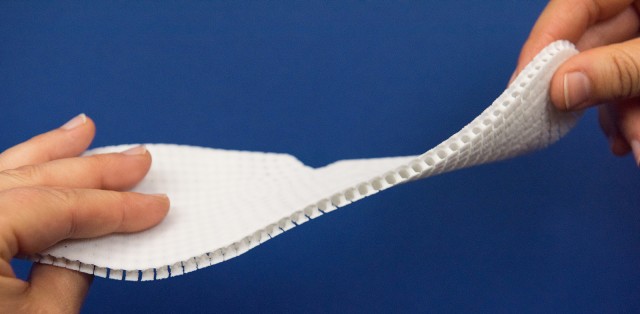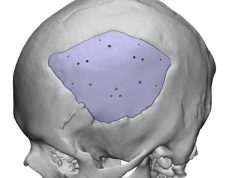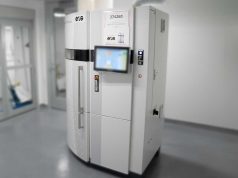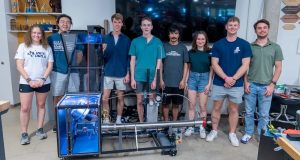Custom insoles for patients with diabetes, that are currently made by hand, could be produced more cost-effective using 3D printing technology in future. Researchers at the Fraunhofer Institutes for Mechanics of Materials IWM and for Environmental, Safety, and Energy Technology UMSICHT are collaborating with industry partners on the process of digitalisation.
If you notice your shoe is too tight you would normally just shift your weight to take the pressure off the area. However, people with diabetes often suffer from nerve endings that become atrophied so they cannot feel the soreness. This results in pressure points and eventually wounds that heal badly. Custom-made insoles by orthopaedic shoemakers provide some relief for theses patients. As each insole is made to the patient’s specific needs, it has not been possible to assess the success of them scientifically. Health insurance companies are interested in the collection of scientific data that would be provided through digitalising the process. Moreover, 3D printing the insoles will prove to be more cost-effective.
“Digital foot mapping is already common practice. As part of this project, we have now also completely digitalized the insole production process,” explains IWM scientist Dr. Tobias Ziegler. “Using newly developed software, the orthopedic shoemaker can design an insole for an individual patient and can print out the result on a 3D printer.”

The material used is thermoplastic polyurethane (TPU) by industry partners Covestro and Lehmann&Voss&Co, who are now developing the material further together with UMSICHT experts, in order to receive even more suitable types for this specific application.
Additionally, IWM scientists have ben optimising the 3D structures that are required of TPU when used to define softer and more rigid areas. “First we think about structures – straight rods, crooked arms, or triangles, for instance – then we produce a computer model of them, key in the data for a particular material, and simulate how rigid the result is under pressure,” Ziegler explains. “Where does an insole need to be soft, or more rigid? By altering the structure type, we can precisely determine the rigidity of the insole.”
Industrial partners rpm GmbH and Sintermask are currently 3D printing the insoles using selective laser sintering, before being sent back to Fraunhofer IWM for testing. The first insole prototypes have already been produced. The software might be available to orthopedic technicians through IETEC, a member of the project, in about two years.
Subscribe to our Newsletter
3DPResso is a weekly newsletter that links to the most exciting global stories from the 3D printing and additive manufacturing industry.























